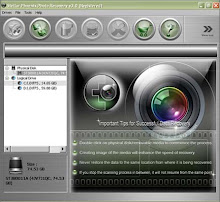Featuring a CCD of 12 megapixel, 14-bit A/D conversion, EXPEED image processor, sensitivity up to ISO 6400, CAM3500DX AF sensor, shooting speed of 6fps, HDMI video output,and super-impressive 3.0" 922,000 pixel LCD monitor, Nikon D300 is a high definition professional D-SLR camera. Storage devices used are CF Type I and II, UDMA, and microdrive.
These storage media being prone to get damaged logically and physically, images stored in them get frequently lost. Images lost from logical errors can be recovered by using data backup facility. However, if it is unavailable or cannot help, we need to use some specific powerful image recovery software.
Suppose, you have some images stored in any of the above storage media. You want to view them on your camera or transfer them to your PC. But, when you try, you find the following error message:
Card not formatted
With this message, it becomes clear that your images are lost and nowhere to be found. Even if you try to access the card, the same error message keeps popping up squarely before your eyes.
Causes:
If you used a wholesome, compatible card when taking the images, and are using the same now, any of the following errors could most probably have prompted the above message:
card removal card reader or camera during previous data transfer or read/write process,
switching the camera off during previous data transfer or read/write process,
plugging off USB during previous data transfer or read/write process.
Any of these errors has certainly caused some logical damage to your card resulting in the loss of the images in it.
Solution:
Following the steps may recover your images:
Reformat your card to make it usable again,
Run an updated data backup process.
If this facility is unavailable, or if it cannot help, use some powerful software ensuring digital image recovery. Programs to recover image employ highly advanced methods and algorithms to cater to complex digital image recovery software needs of the time.
Tuesday, November 3, 2009
Subscribe to:
Comments (Atom)
